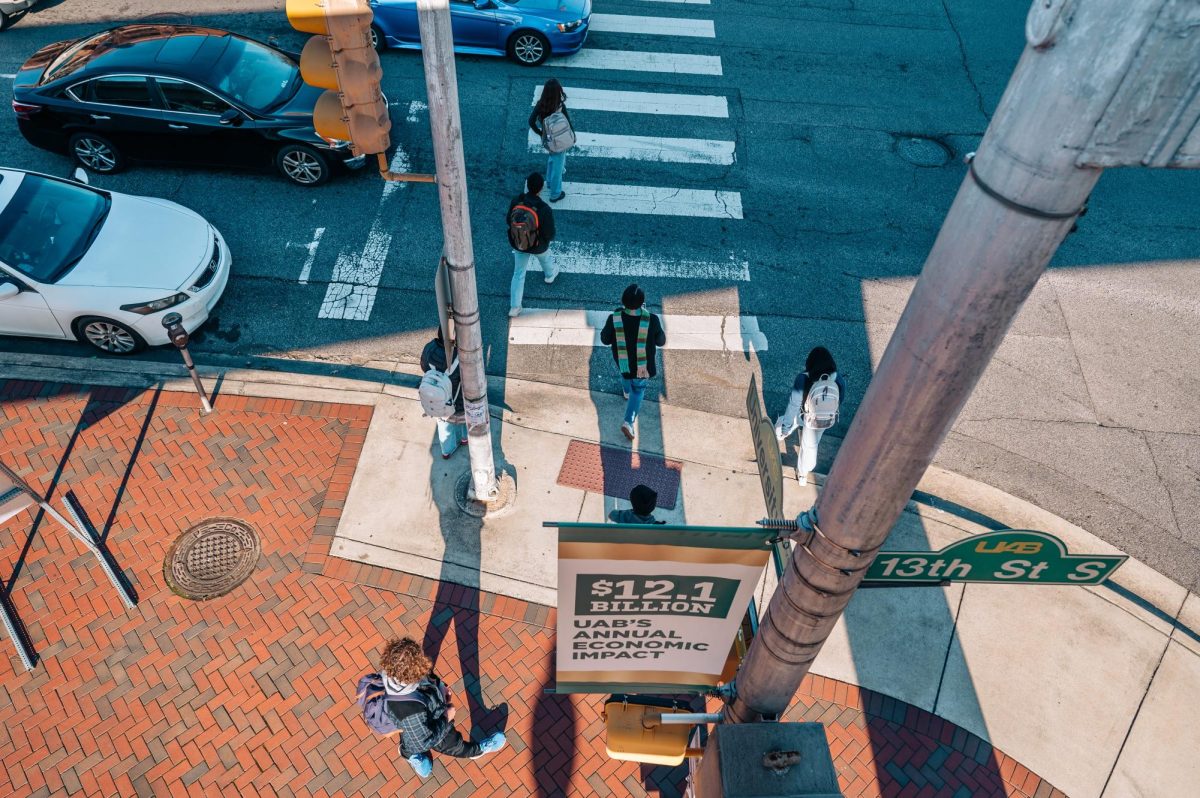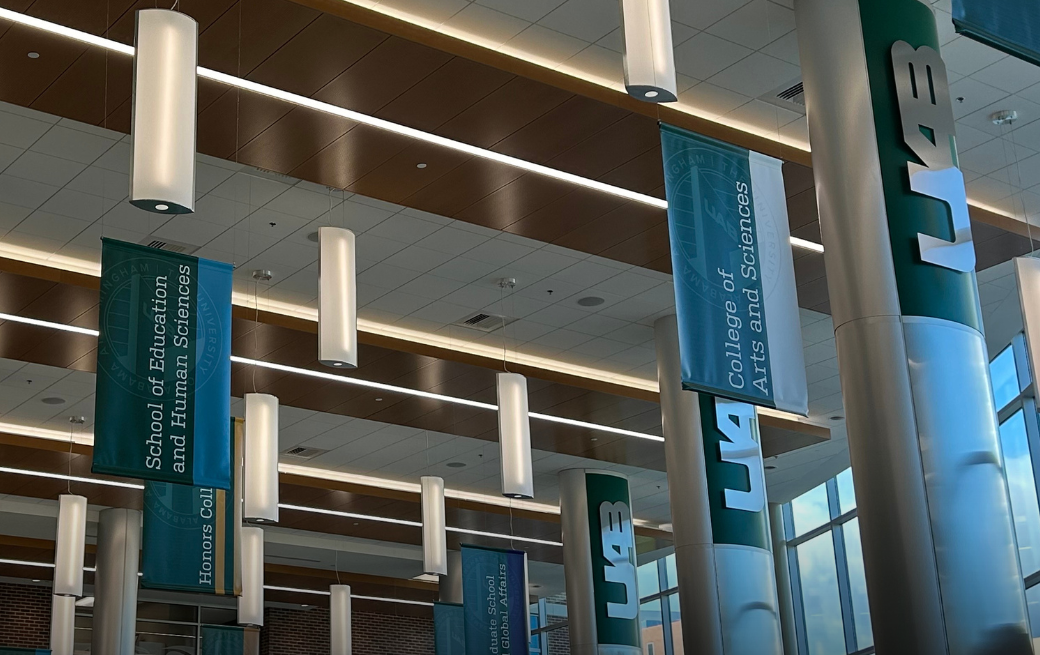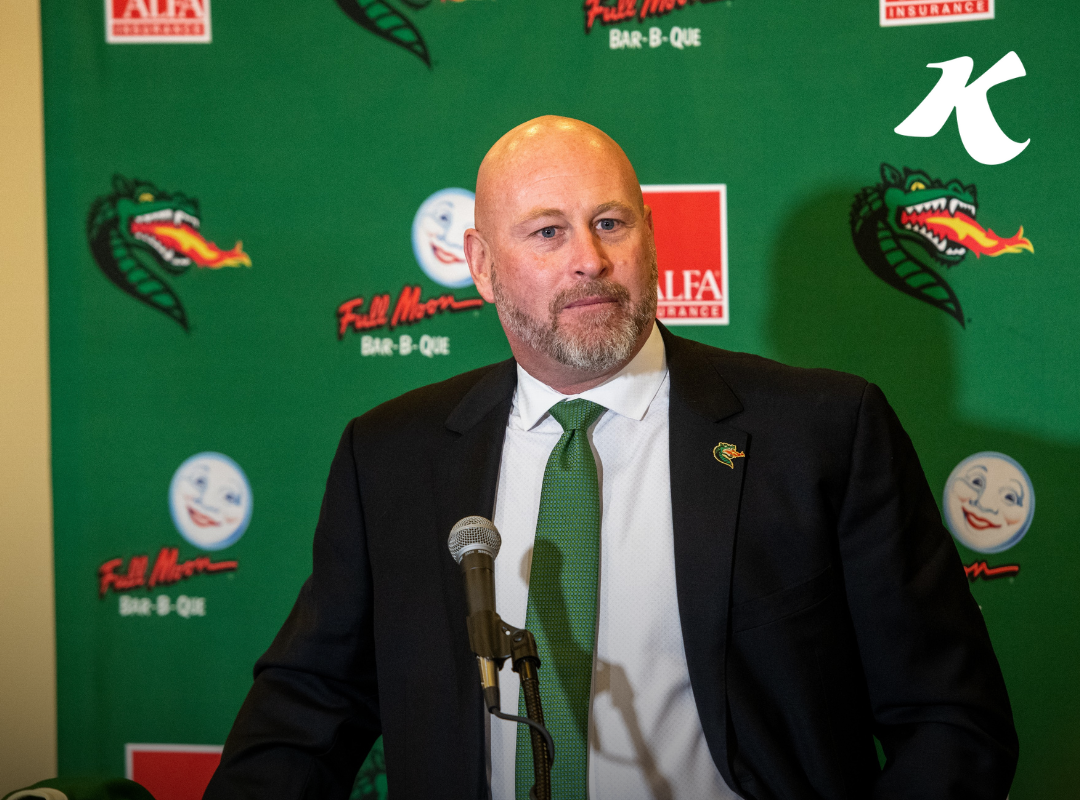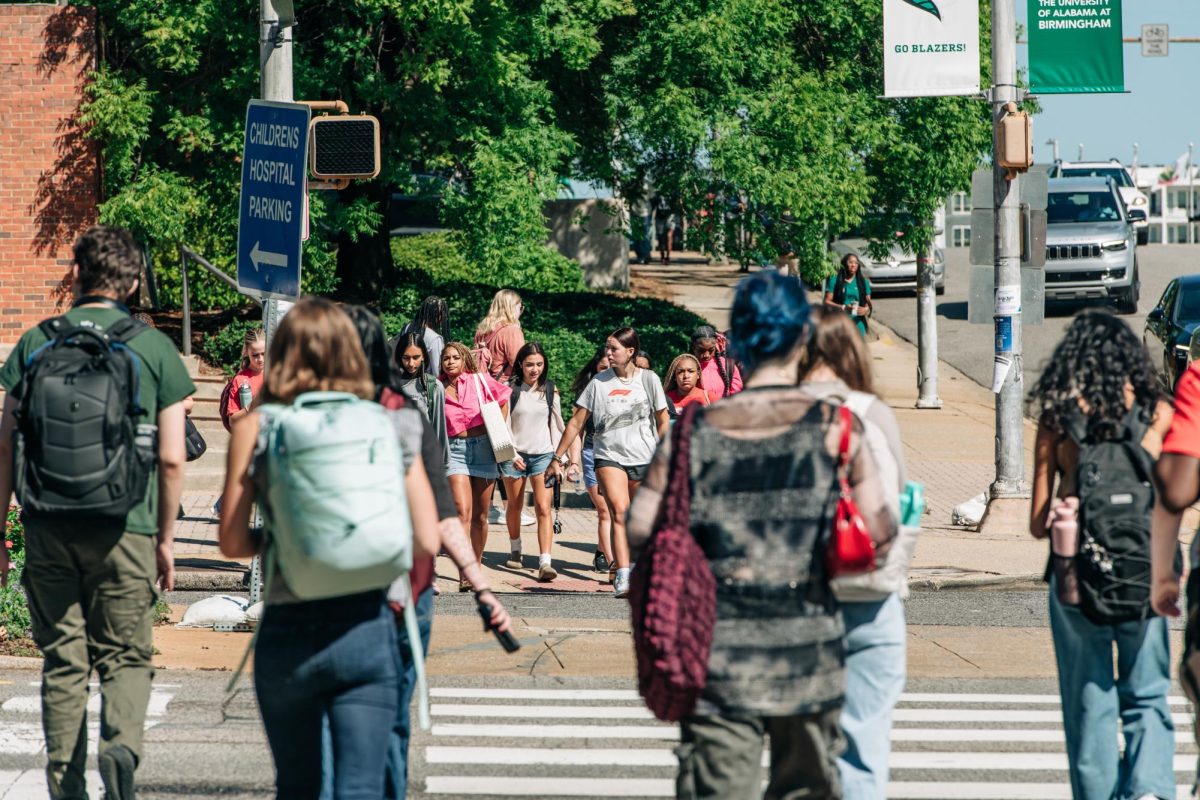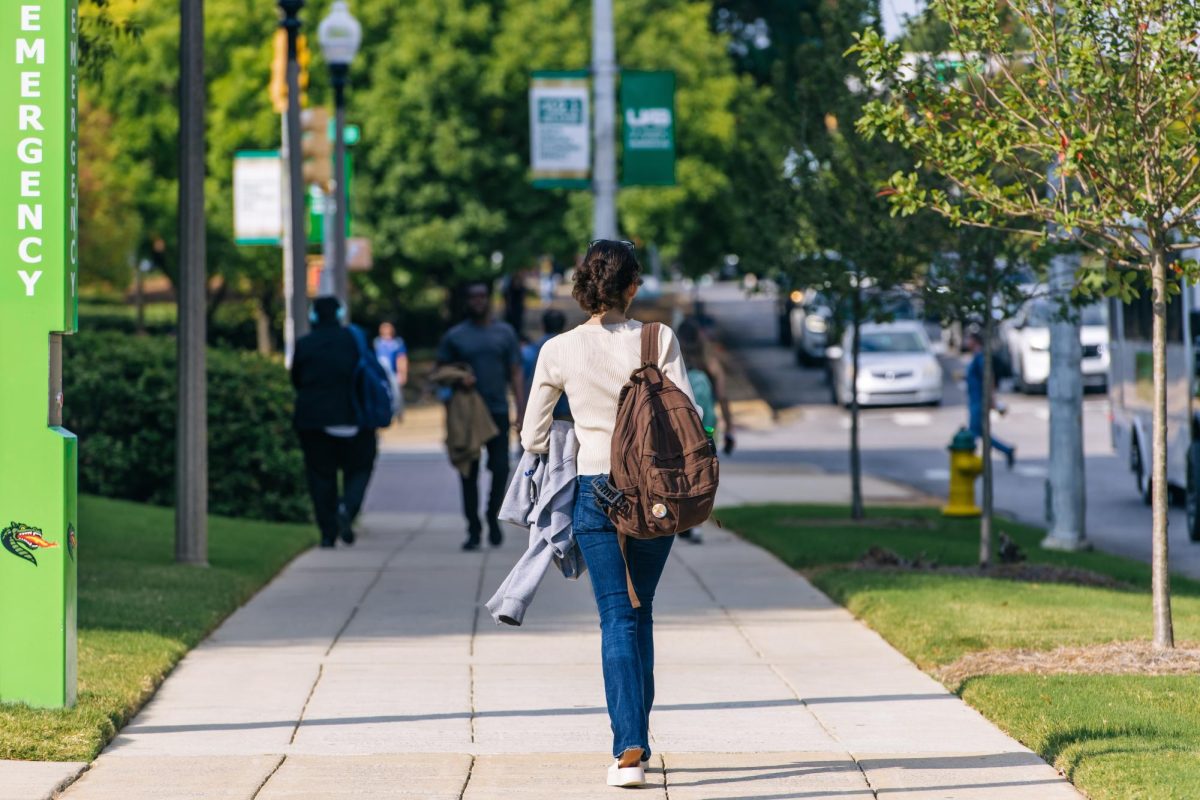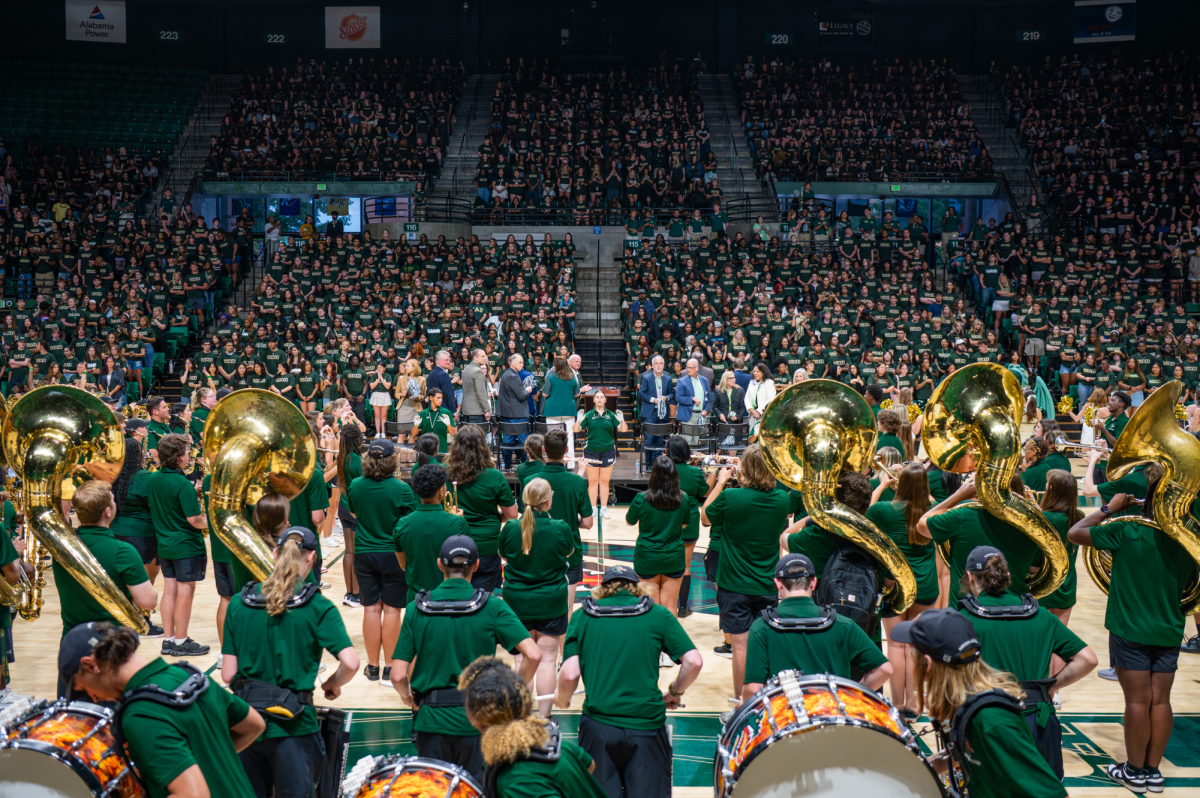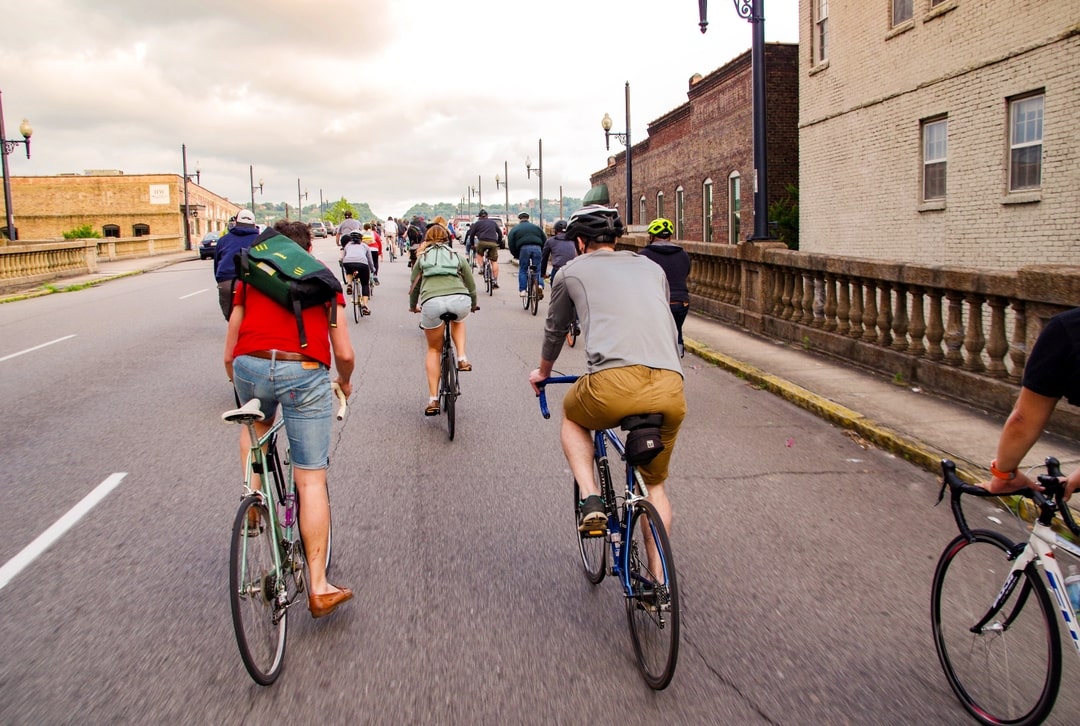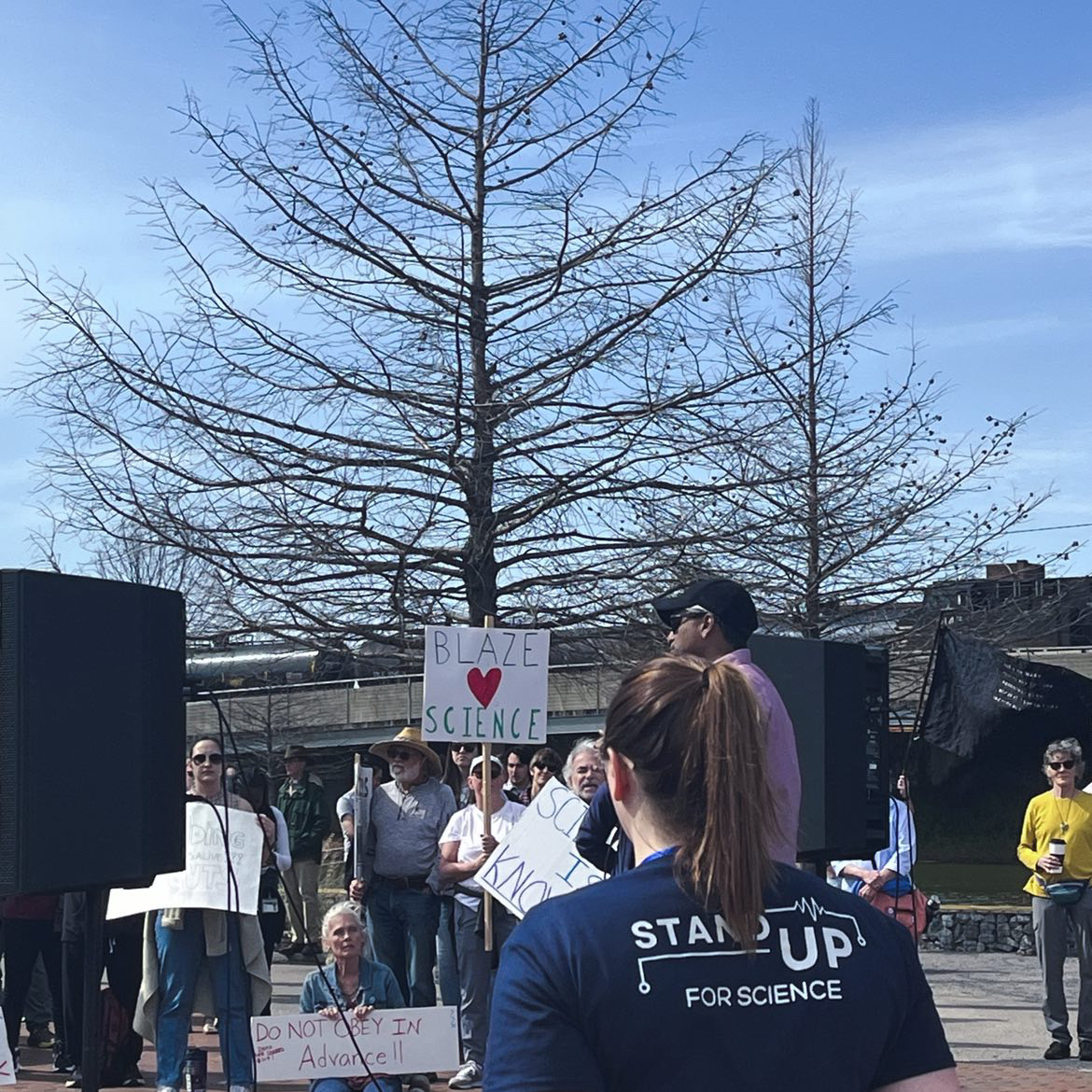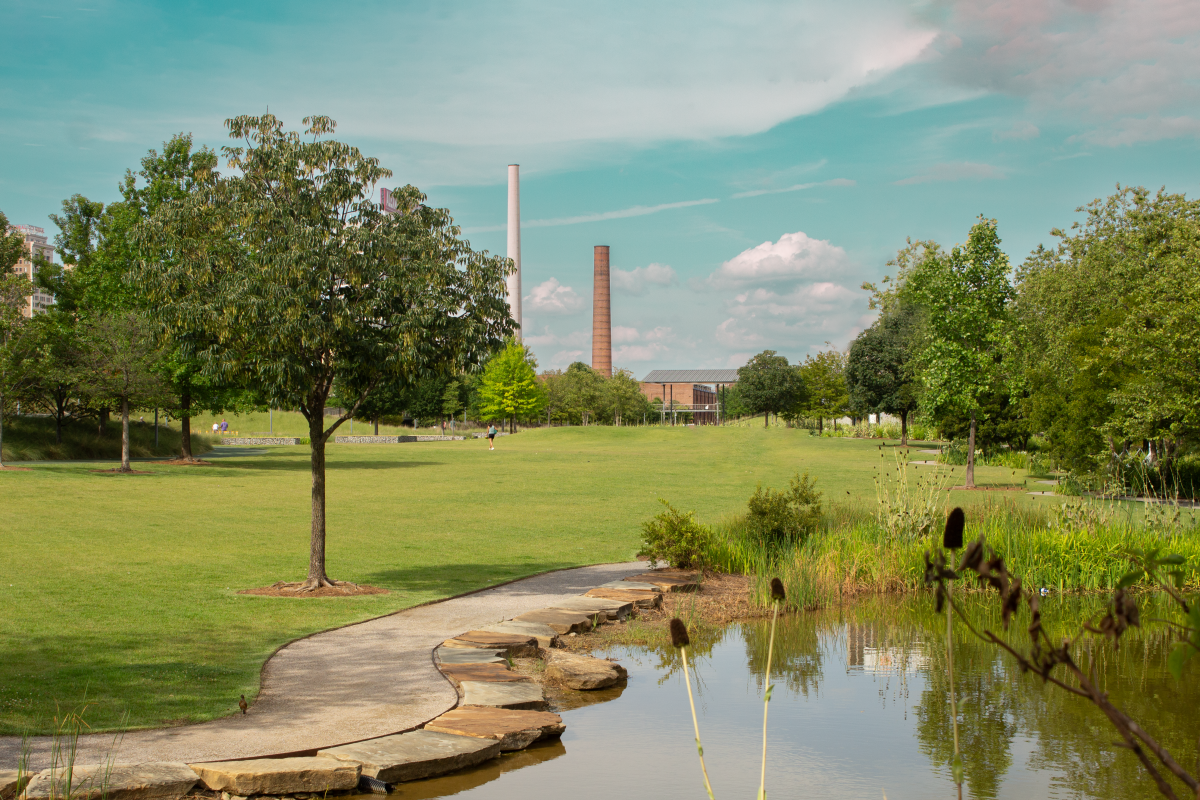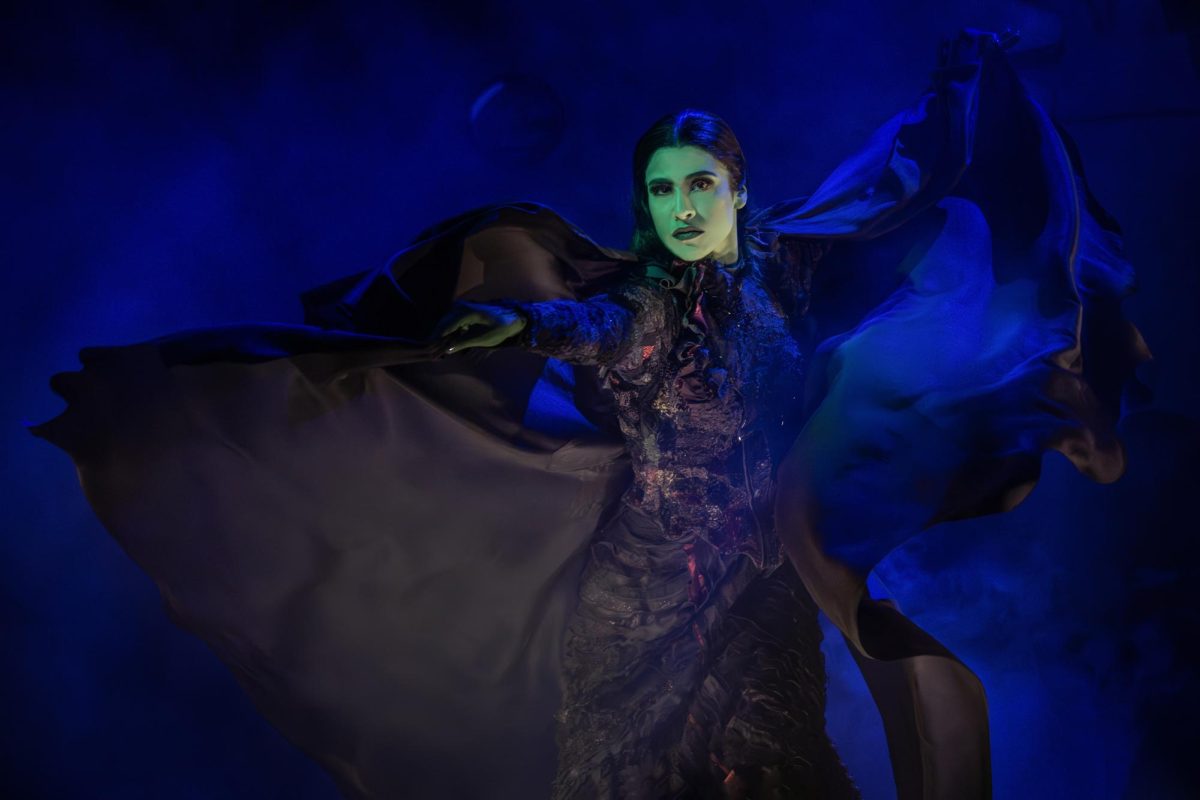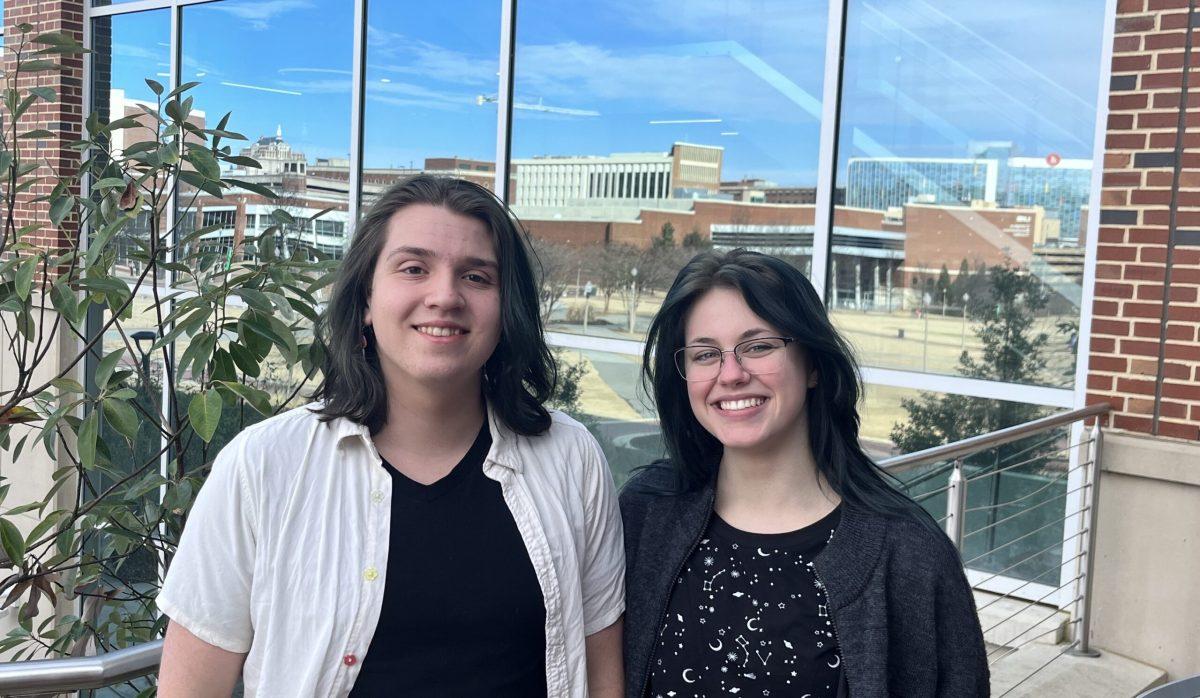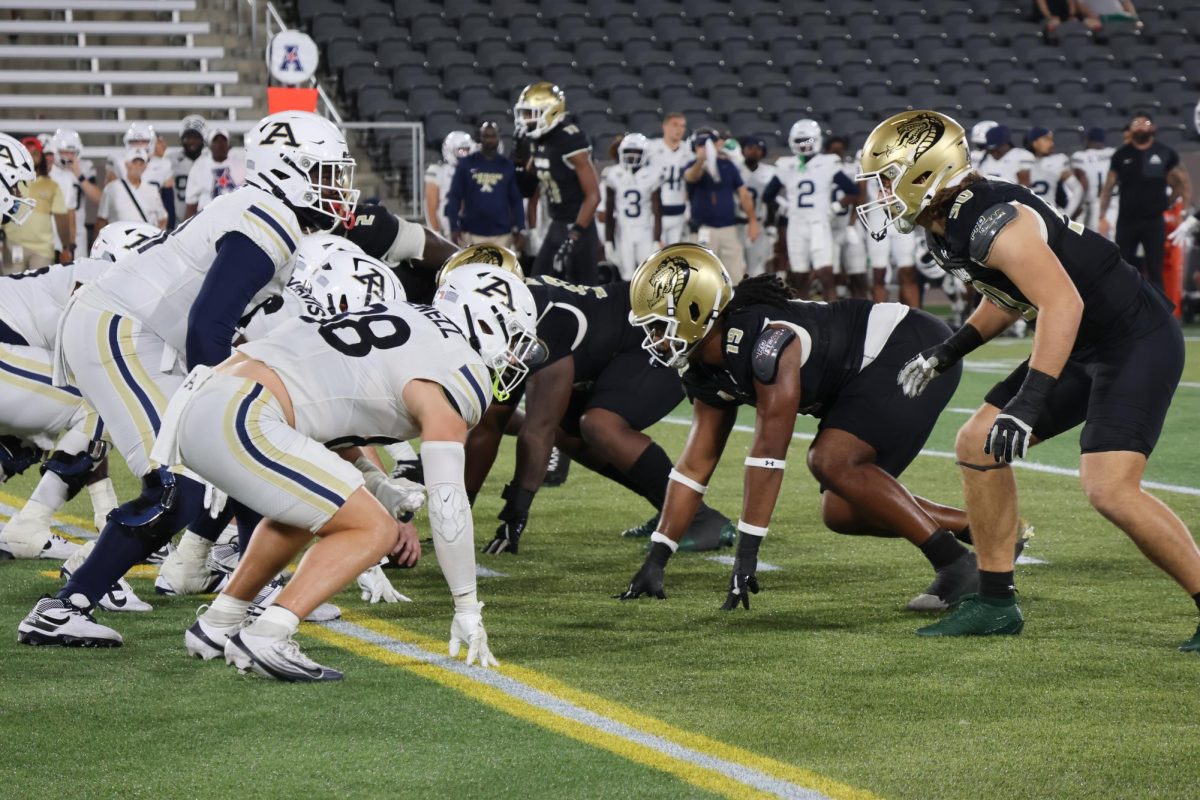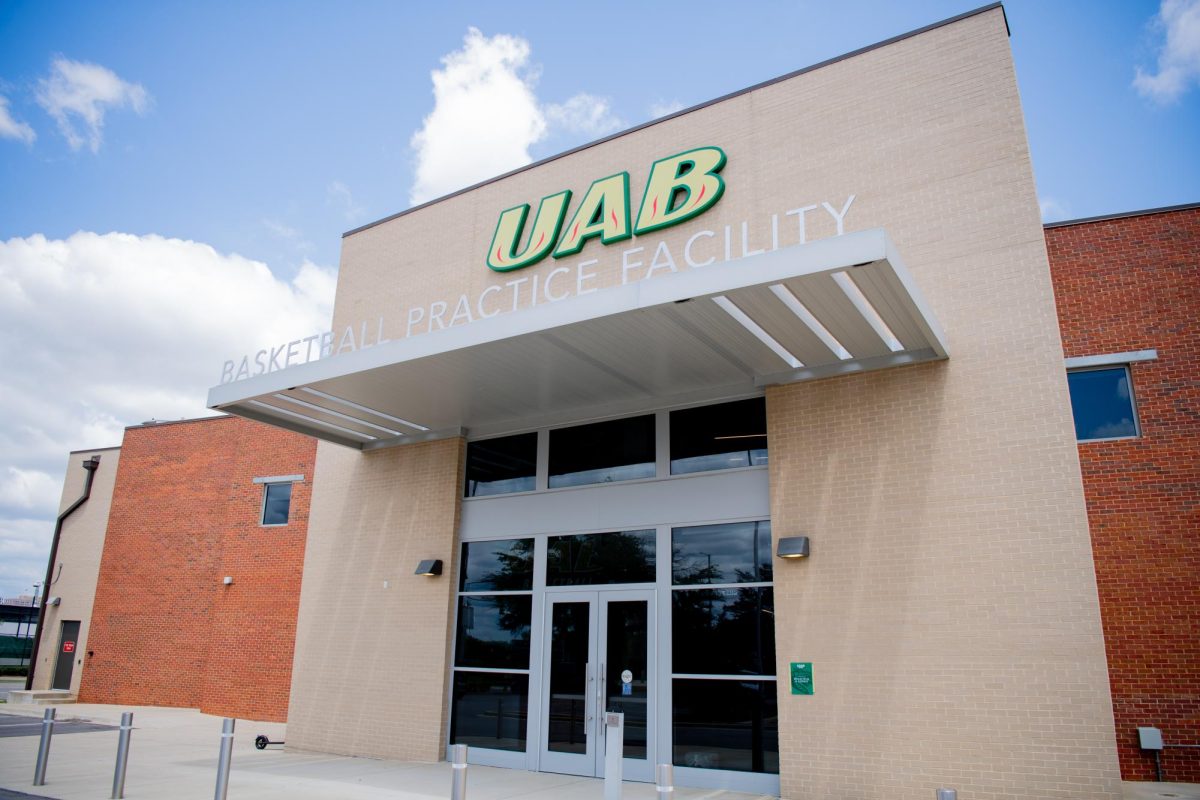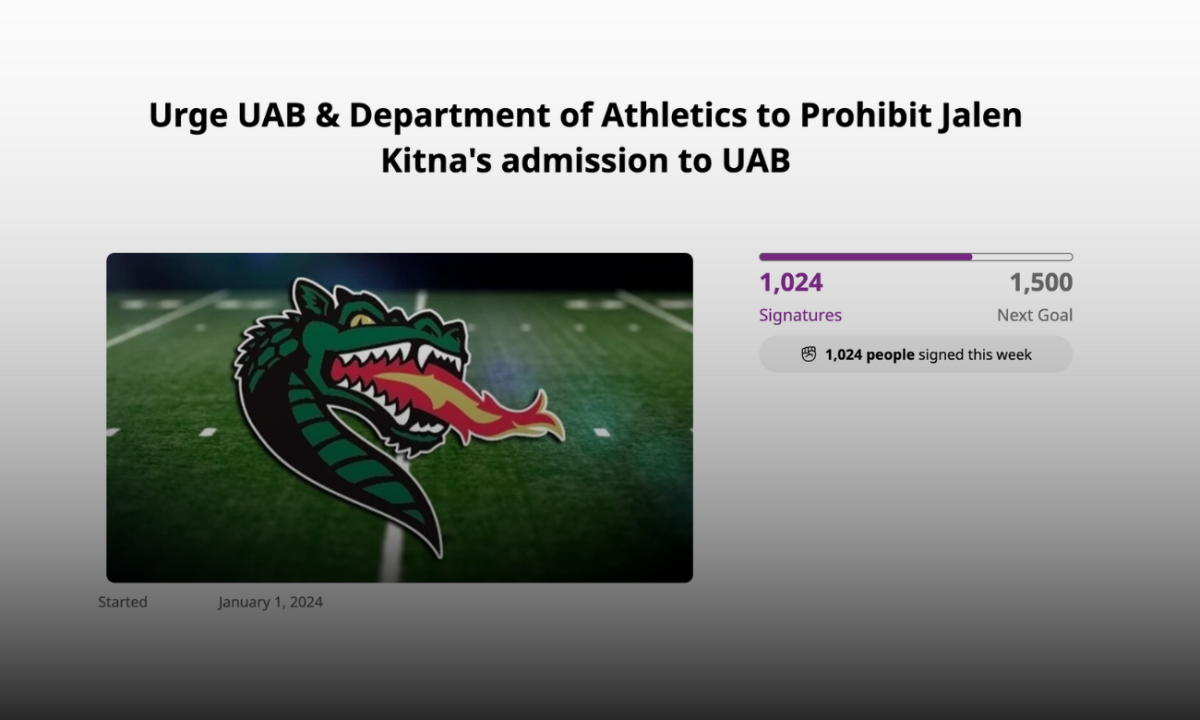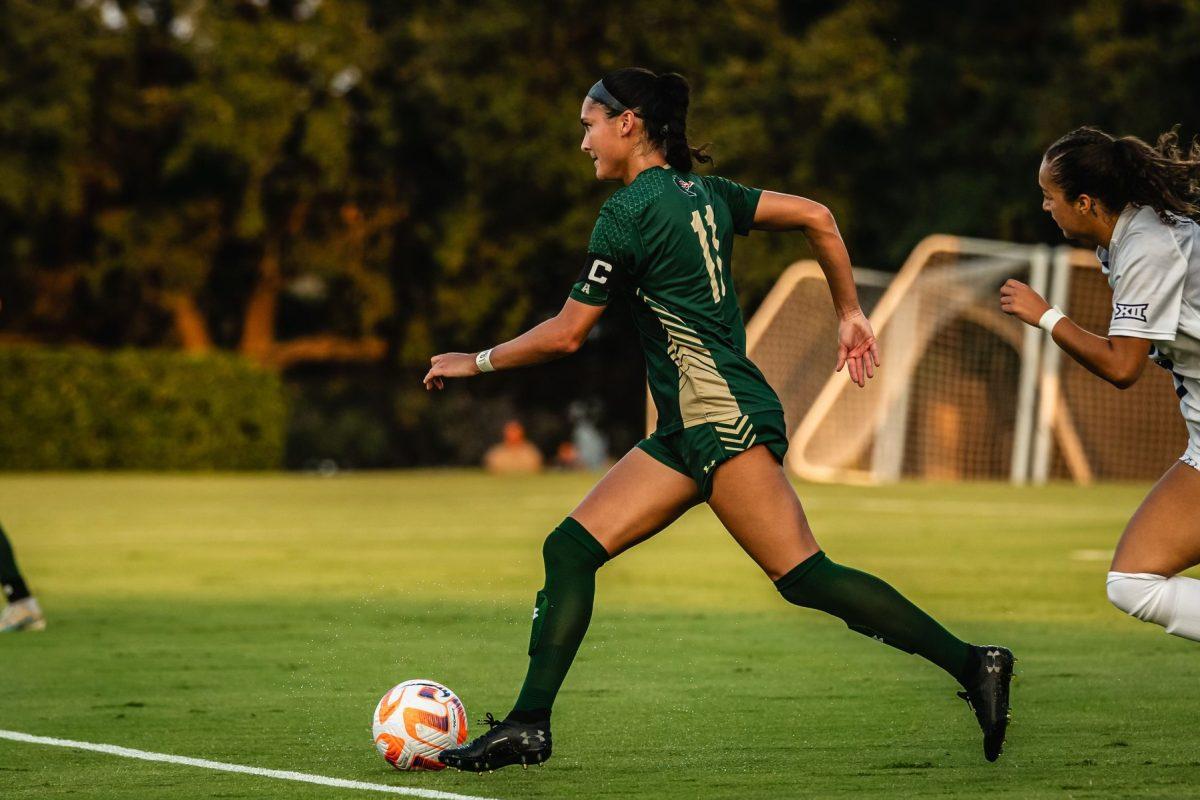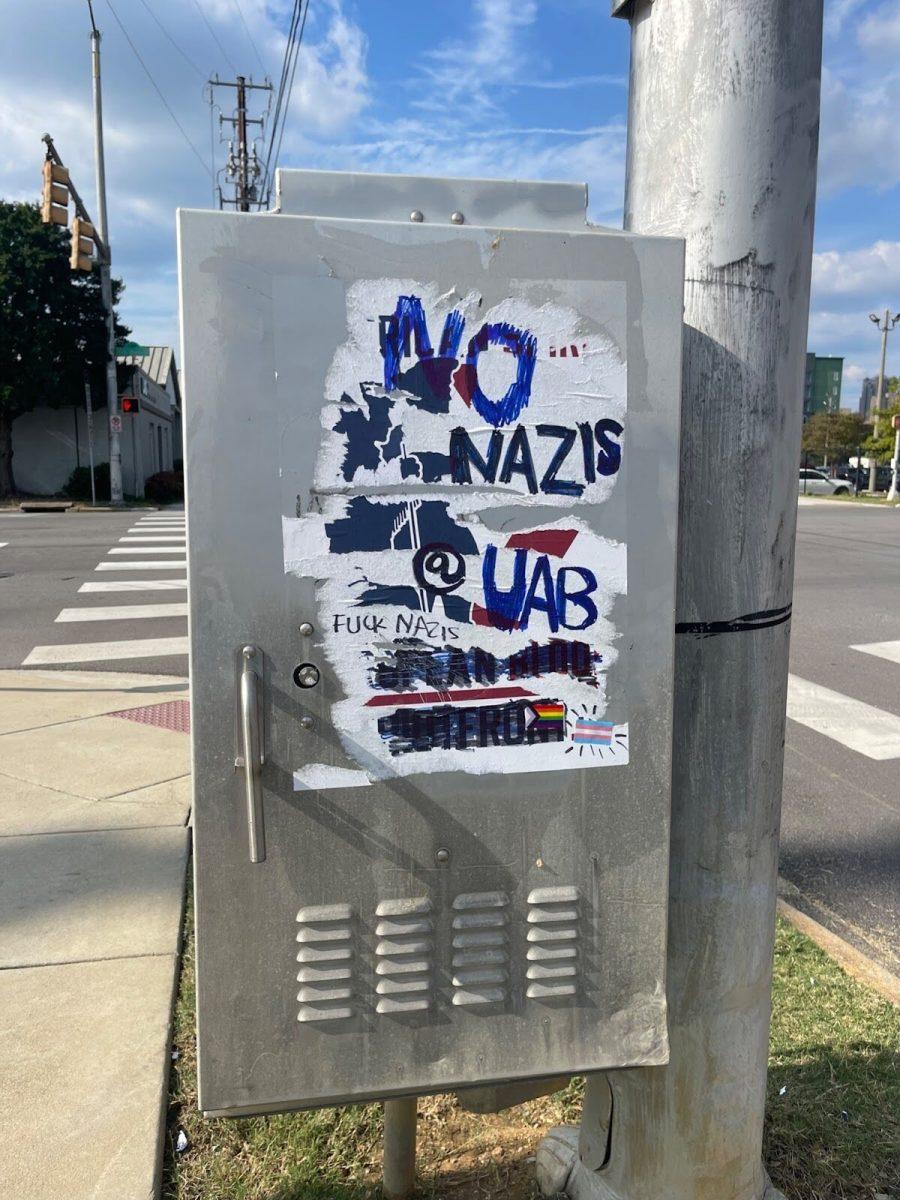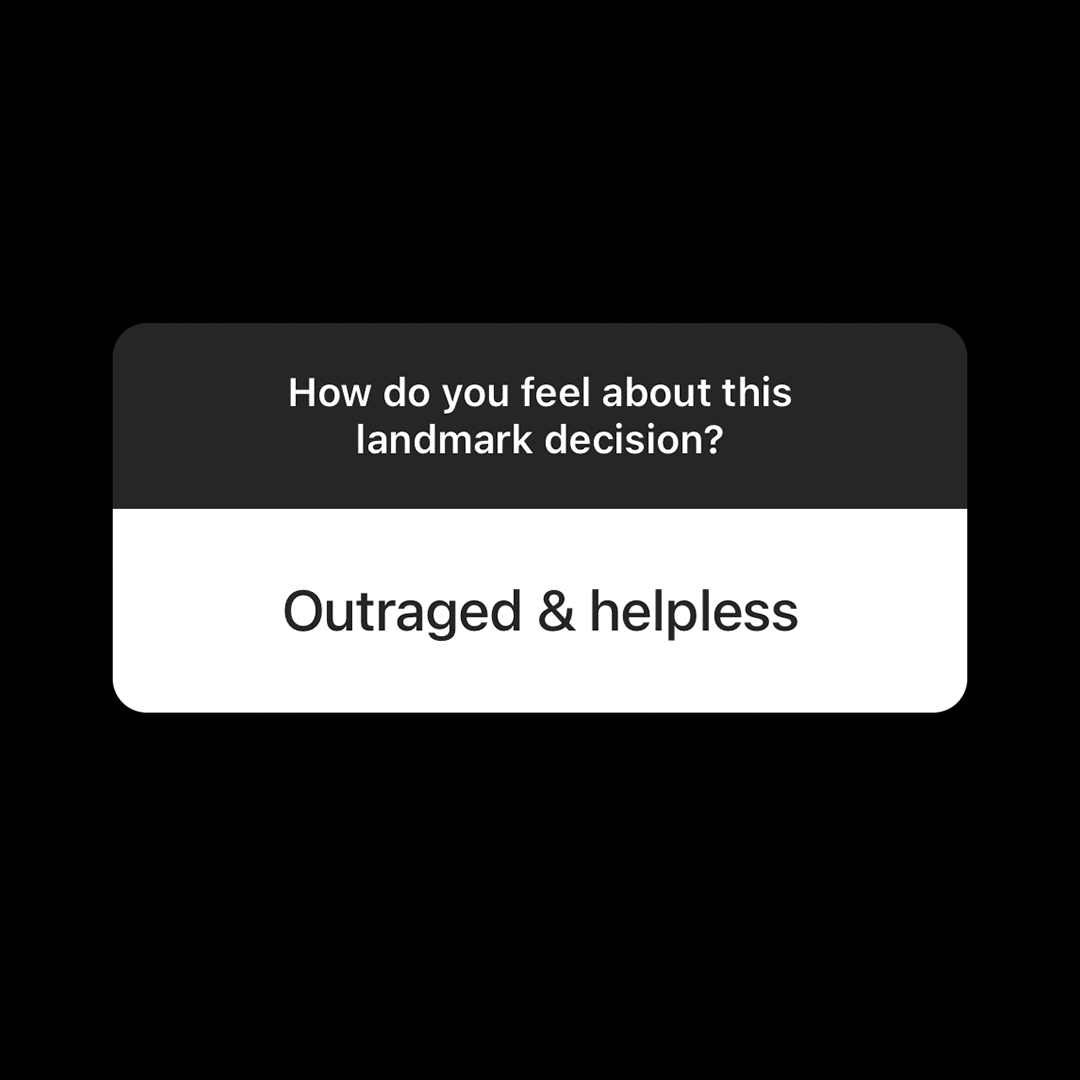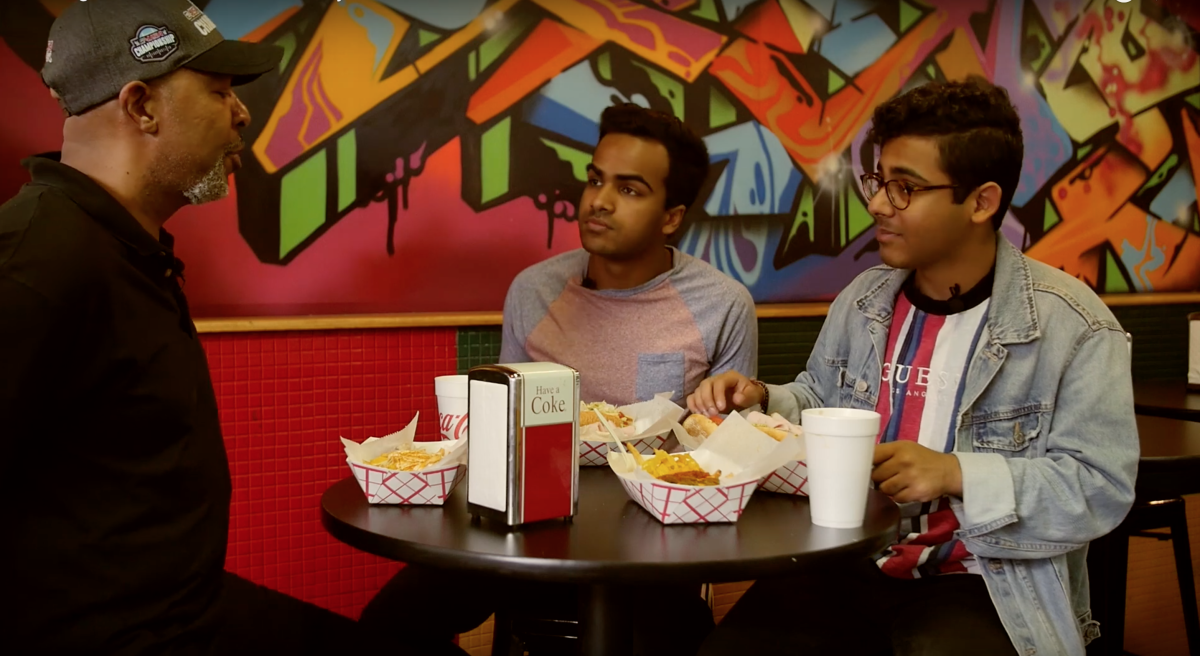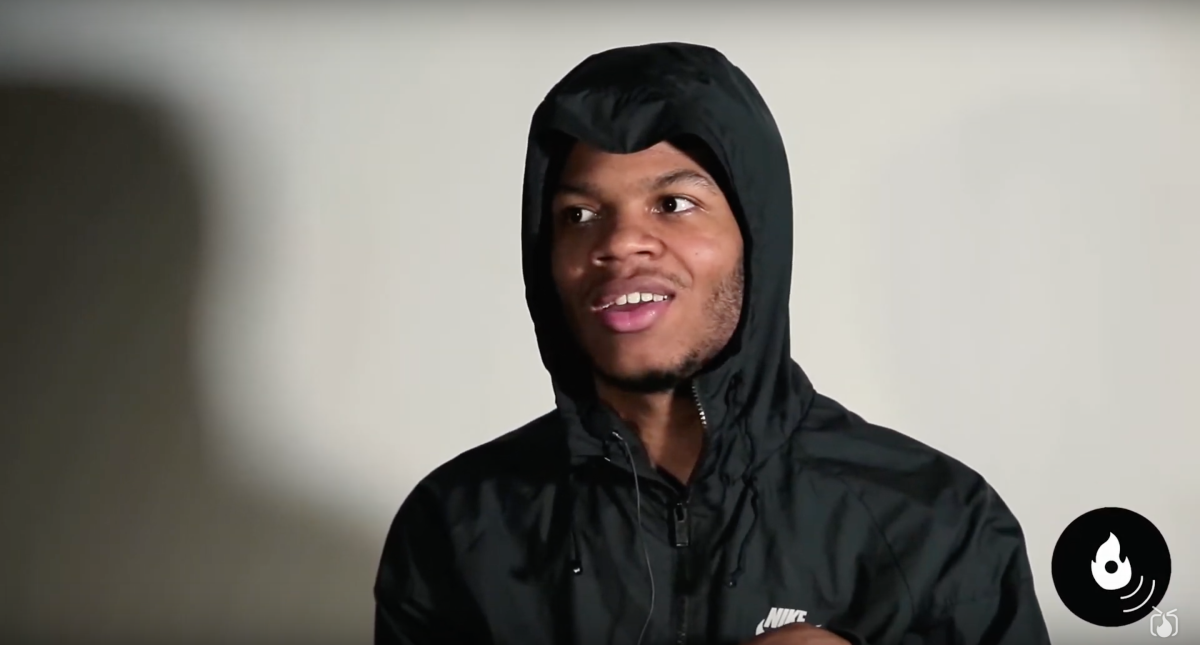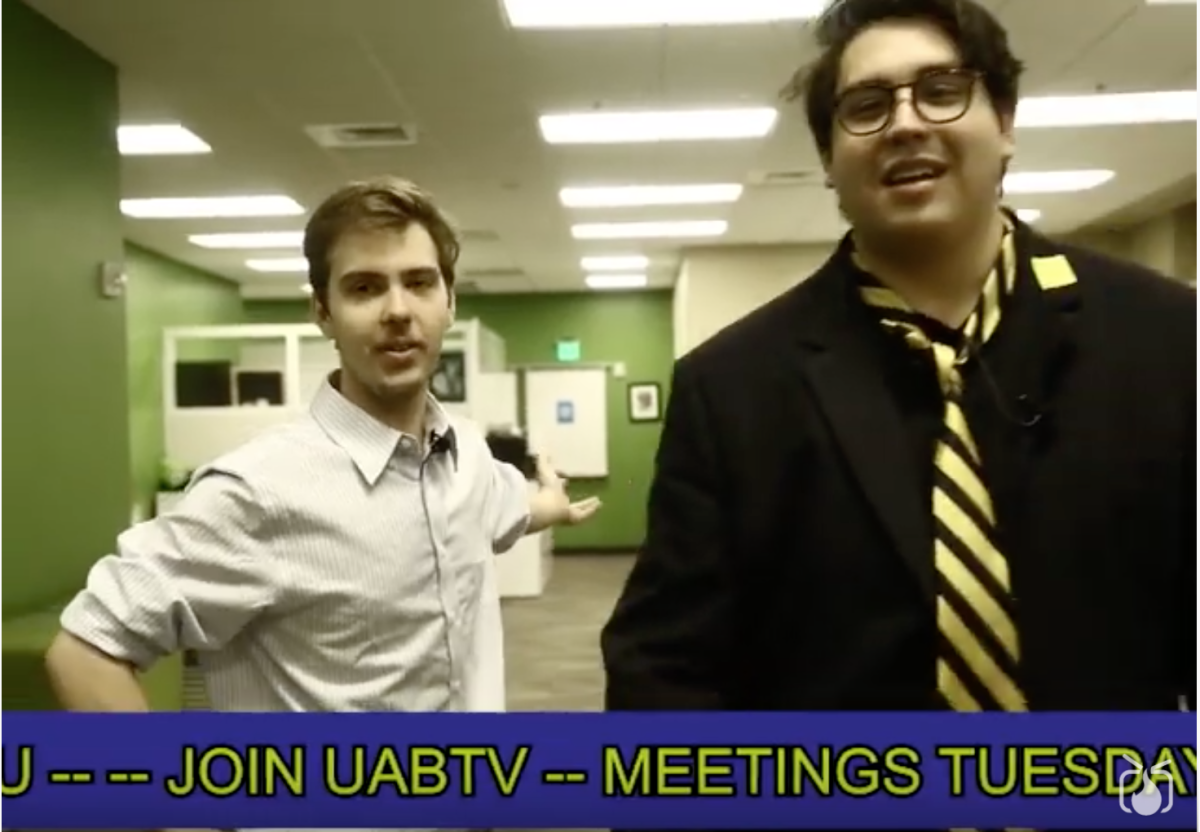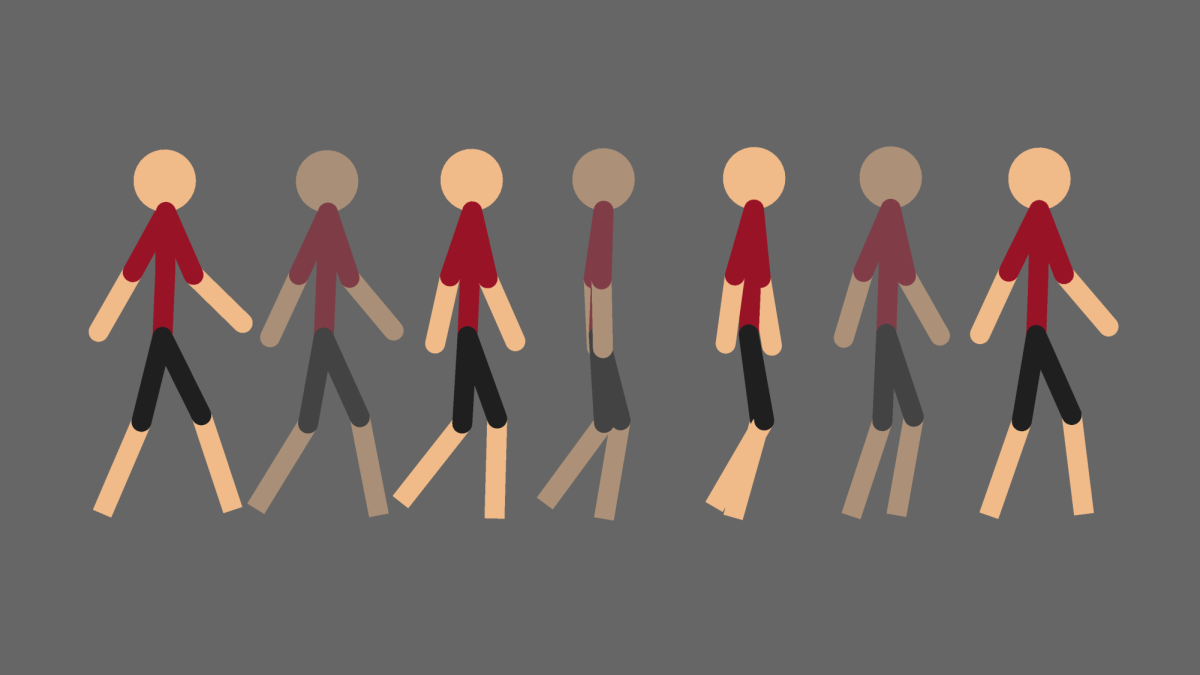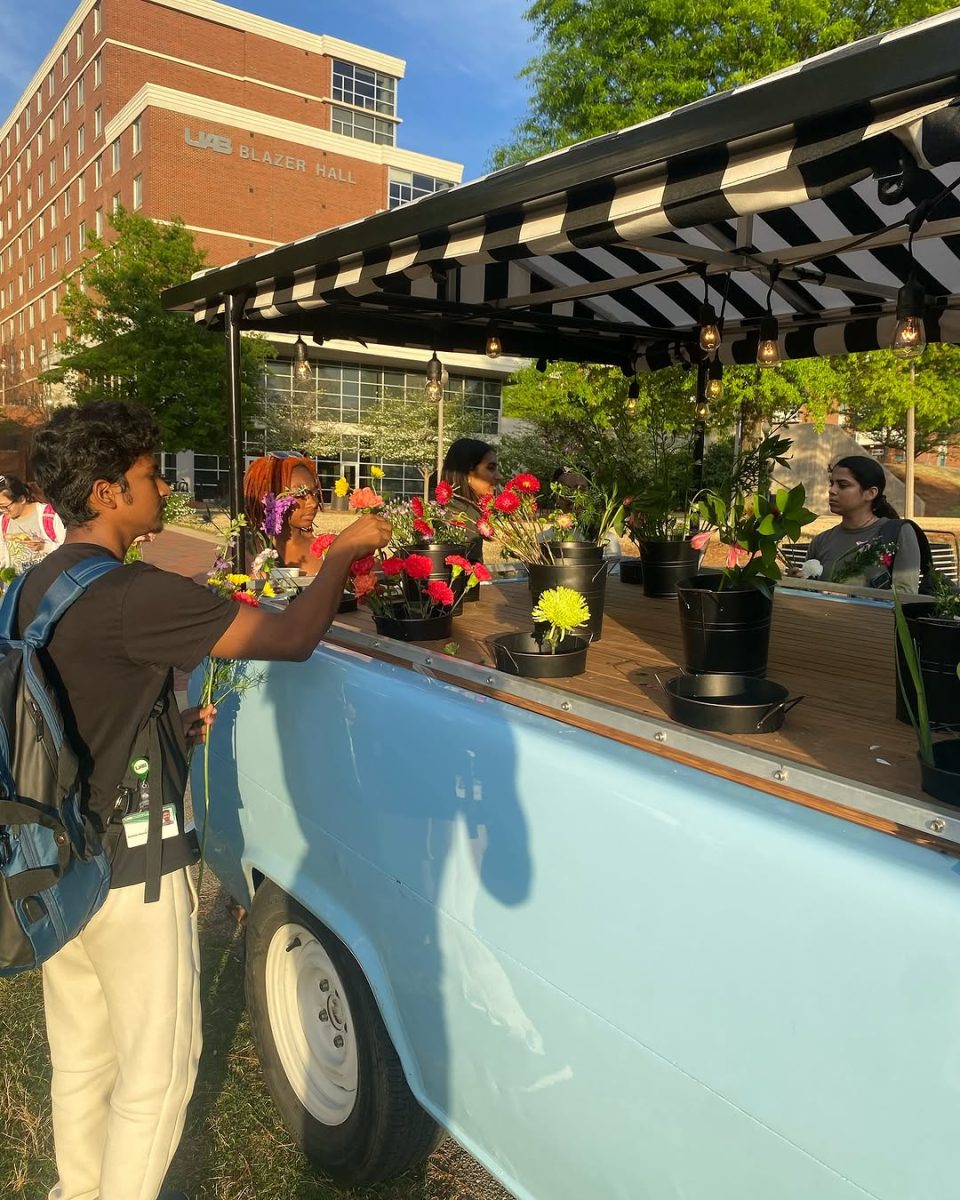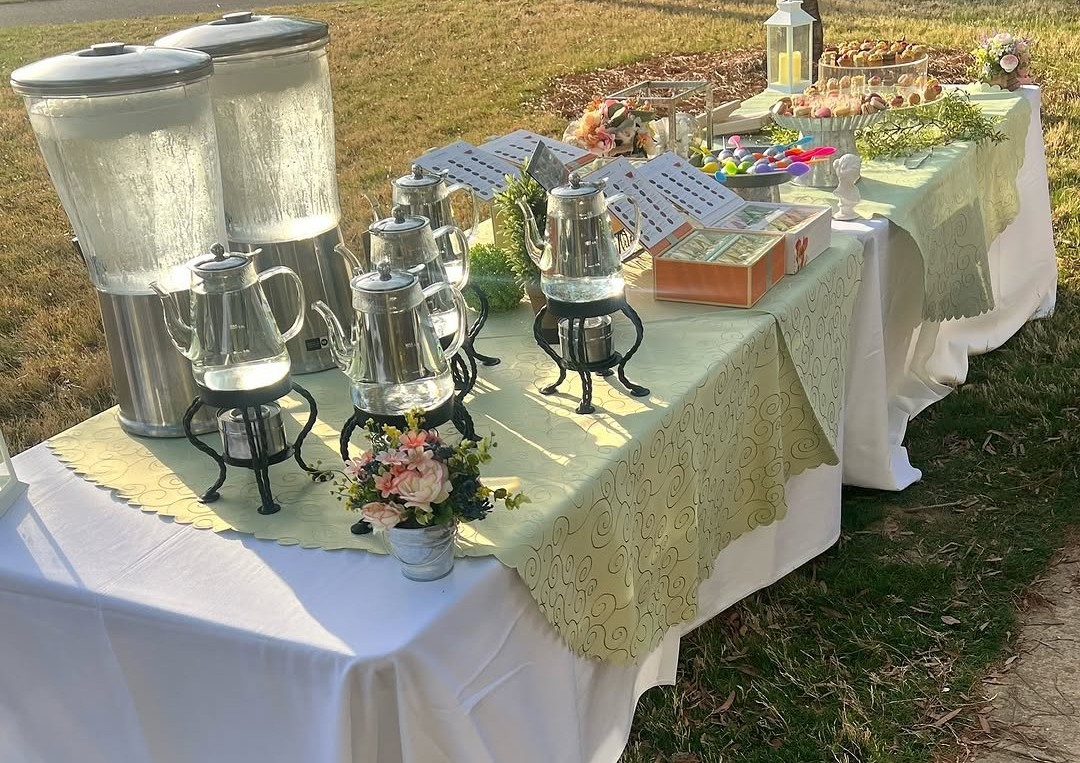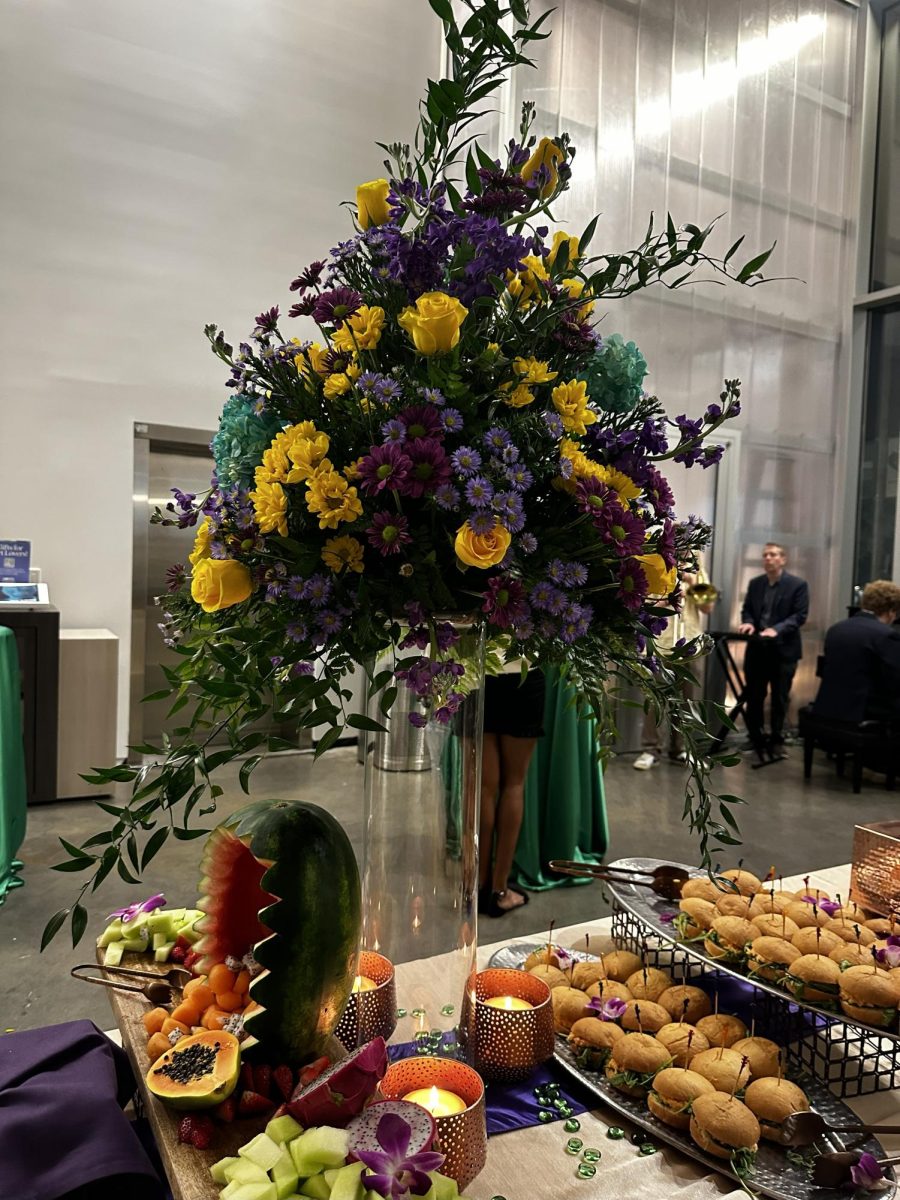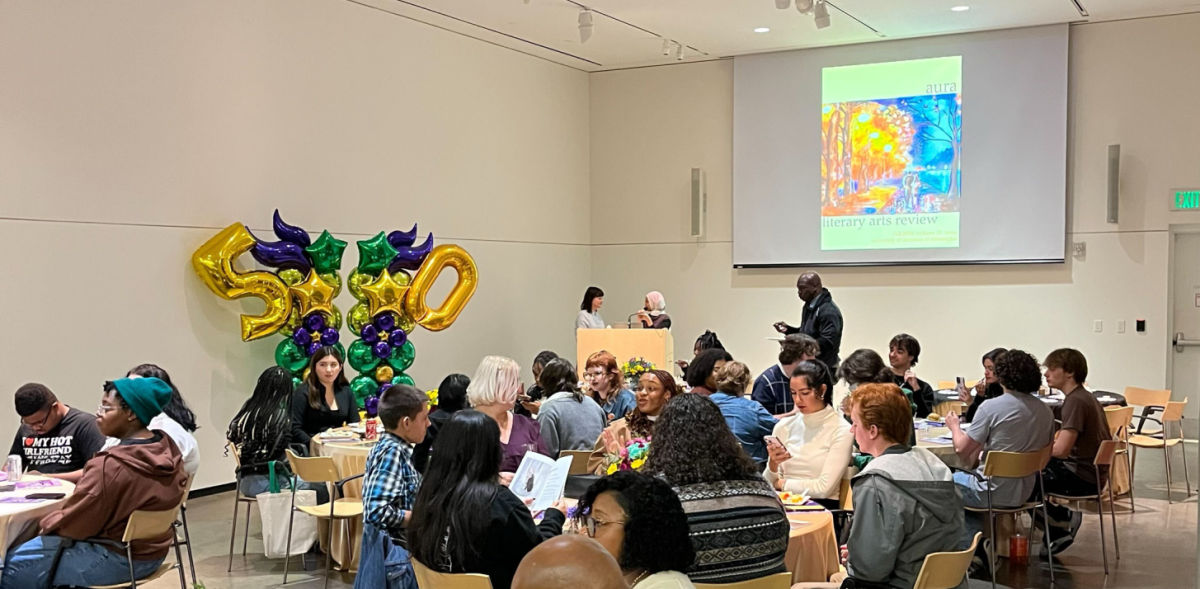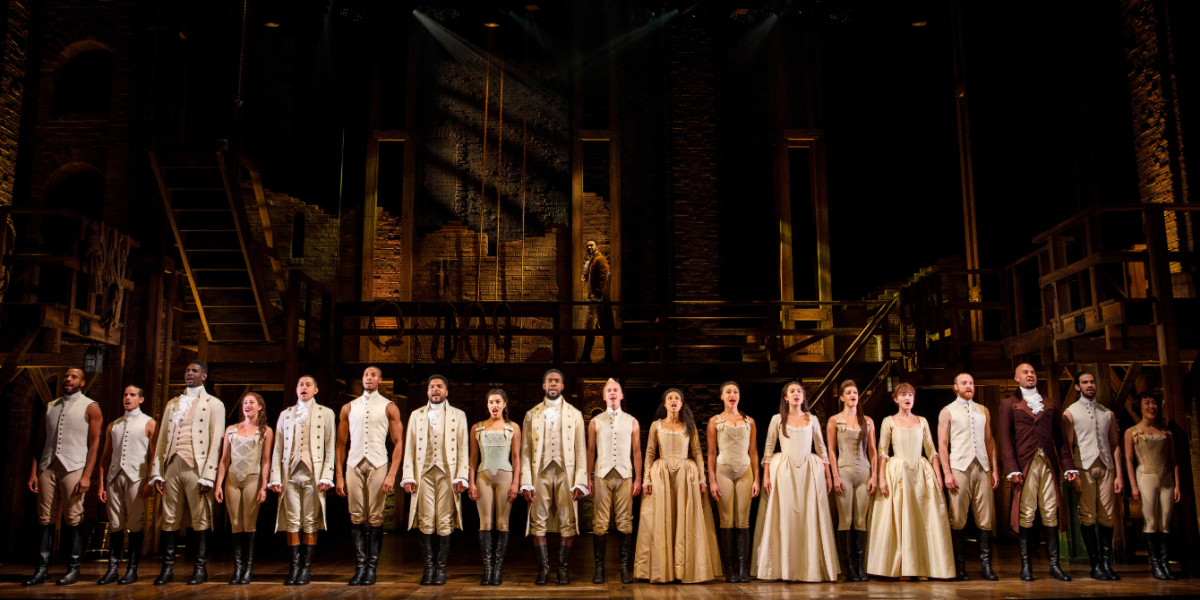Nichele Cantrell – Copy Editor
[email protected]
Statue remembering the Civil Rights Movement and police brutality in Birmingham, Ala. (Photo by Sarah Adkins).
As celebrations in honor of Dr. Martin Luther King Jr. come to a close, the ideals of people who marched for equality and that of the man himself are being considered. Nearly 50 years ago, King led a nonviolent march to the capital in Montgomery, Ala.
The 50-mile trek from Selma to Montgomery was an outcry from citizens who wanted their voter registration rights. The success of the Civil Rights Movement of that time can be contributed to more than the signs that they displayed and the speeches eloquently voiced by King.
In 1963, the Birmingham Campaign, led by King, Fred Shuttlesworth, and James Bevel resulted in confrontation between black students and white authority. At the time, Birmingham was the epitome of segregation and racial division.
The statues outside the Birmingham Civil Rights Institute remember a campaign of nonviolent direct action that culminated in peaceful walks from the 16th Street Baptist Church to City Hall to positively change the city.
The success of the movement can be greatly contributed to the youth who decided they would not allow themselves to be forced into a society that did not care to see their worth. Instead of letting things simply happen to them, they decided they would go out and make things change for the better.
Eugene “Bull” Connor and the Birmingham Police arrested over a thousand activists and students. Their tactics of subduing bystanders, including children, included water cannons and police attack dogs.
Images of young Americans bonding together to fight for what they believed in, despite the vast obstacles in front of them, are forever ingrained in American minds and the minds of others watching across the world.
Flash forward to 2015. The death of black youth Michael Brown allegedly at the hands of white police officer Darren Wilson among other instances of black lives ended by white authority have resulted in continual unrest in Ferguson and throughout the country.
Today, we youth in America find themselves facing more obstacles and they have chosen to take a stand in the midst of leaders and decision-makers.
On a campus where the acceptance of individuality is vital to the culture, UAB stands in the middle of a space for discussion and change. The events that have taken place, and those yet to occur, can’t be ignored, even if students, faculty and staff try their very hardest to not pay attention.
“Nobody’s going to give anything to you. You have to make some noise. To get your football team back make some noise…whatever the case make some noise and just know that the art of protest is not dead. The art of boycotting is not dead….”- Iva Williams III
John Saddens, junior international studies major at UAB, was surprised by events that occurred in Ferguson. Wilson was not indicted for his involvement in the shooting of Brown and protests against injustice in Ferguson grew more severe, not because the issues of race and racism are new to America, but because of the response to the taking of someone’s life.
“[What shocks me is] people defending a young man’s life being taken. A young boy was killed. People not focusing on that issue and trying to turn it into a political thing [is a problem].”
The loss of life is the focus of most individuals and the reason why there are so many supporters of the Black Lives Matter movement. According to their site, “#BlackLivesMatter is a call to action and a response to the virulent anti-Black racism that permeates our society. Black Lives Matter is a unique contribution that goes beyond extra- judicial killings of Black people by police and vigilantes.”
Members of the Black Lives Matter movement in Birmingham held protests at the Summit on Highway 280 and the Riverchase Galleria on Friday, Dec. 19 and at Lakeshore Parkway on Friday, Dec. 26.
“When I first came, it was just to show up, it was just to say ‘Hey I’m here with you,’” Iva Williams III, president of the local chapter of 100 Black Men, said of his participation in the Black Lives Matter protests in Birmingham. “There were more college students out there. I remember thinking at the time that it reminded me of my parents’ conversation. Their parents weren’t supportive of the movement. It was the kids who jumped out of the windows at the school [to take part in the movement],” Williams said.
While the protesters of Black Lives Matters fight for equality as King did so many years ago, ignorance remains. In November, CNN International News Anchor Rosemary Church responded to the recent Ferguson unrest: “Why not, perhaps, use water cannons,” effectively demonstrating society’s disregard for the hard-won efforts of the youth and activists on the 1963 Birmingham Campaign.
In Williams’ mind, students at UAB have already shown that they are not going to tolerate leadership that does not work with their best interests in mind. The removal of the football, rifle and bowling teams at UAB sparked outrage. The loss of these teams would ultimately see a decrease in scholarships and unity across UAB. Cries of #FreeUAB continue to be shouted across campus, as students show that they deserve to be recognized and supported, not fought against.
The power that students have, not only at UAB but across the country, is vast and probably more powerful than they could imagine. “Nobody’s going to give anything to you. You have to make some noise. To get your football team back make some noise…whatever the case make some noise and just know that the art of protest is not dead. The art of boycotting is not dead. If you want to shut down something, keep your money from it. Keep your presence from it, they’re going to talk to you,” Williams said.
The ideals of protest and standing up to injustice are still alive in the spirit of youth, and continue strongly at UAB, in Alabama, and across the nation.

